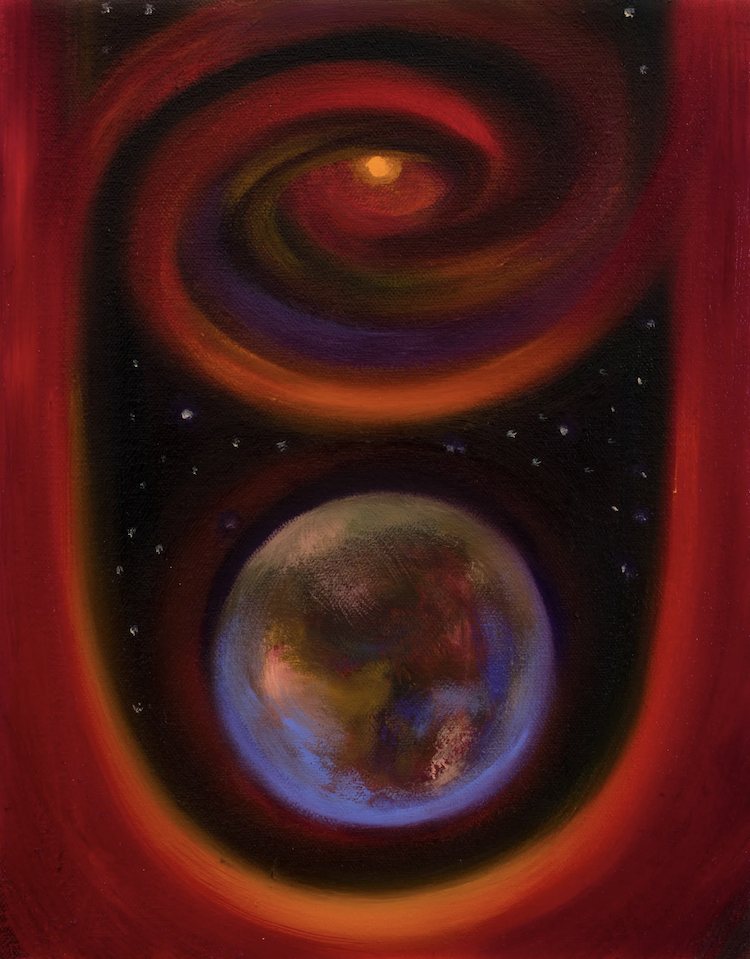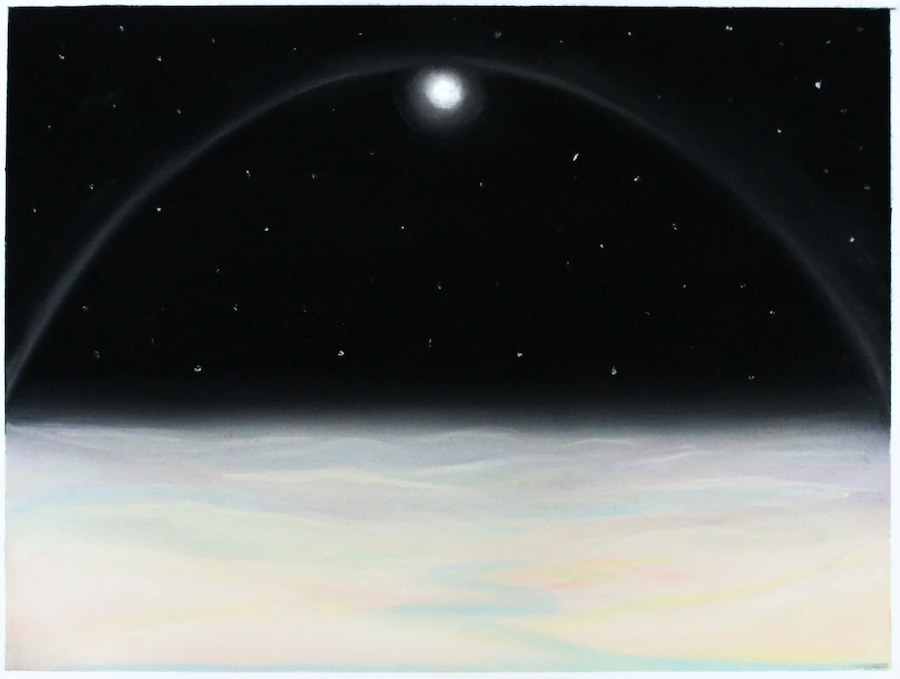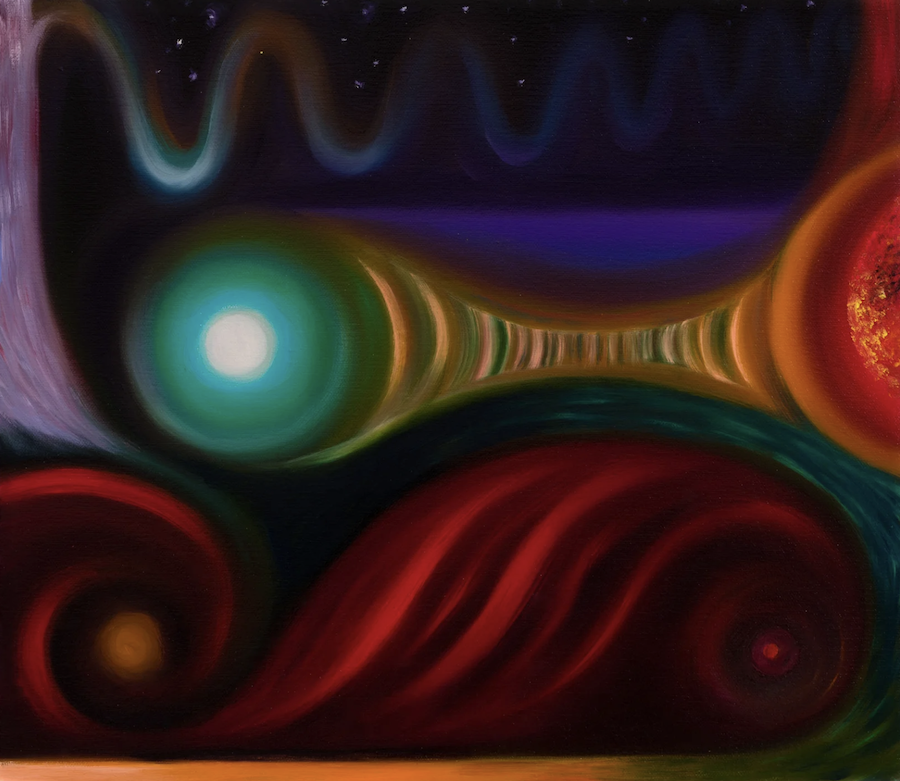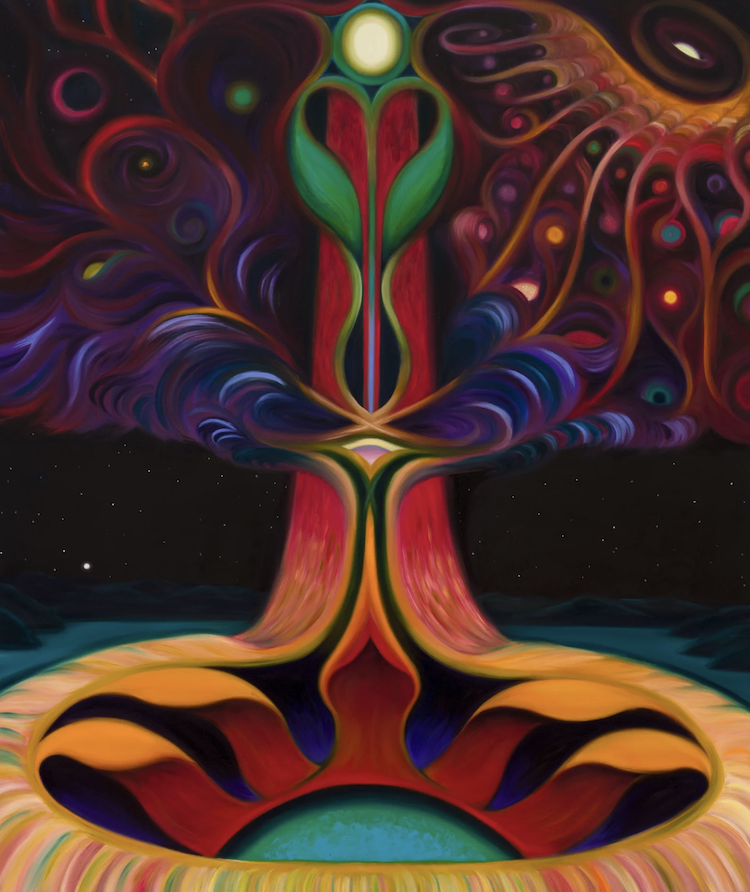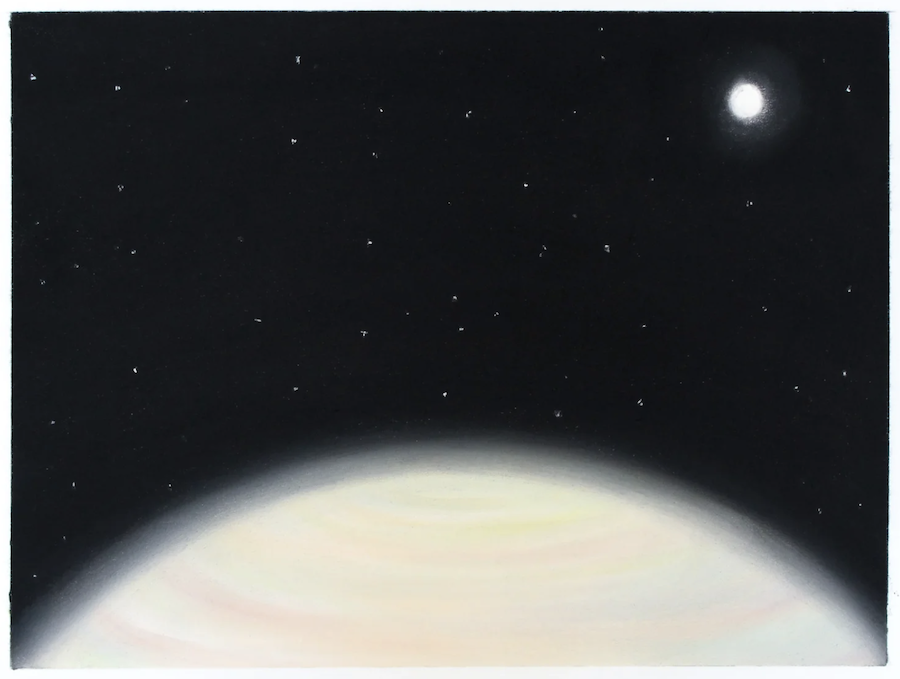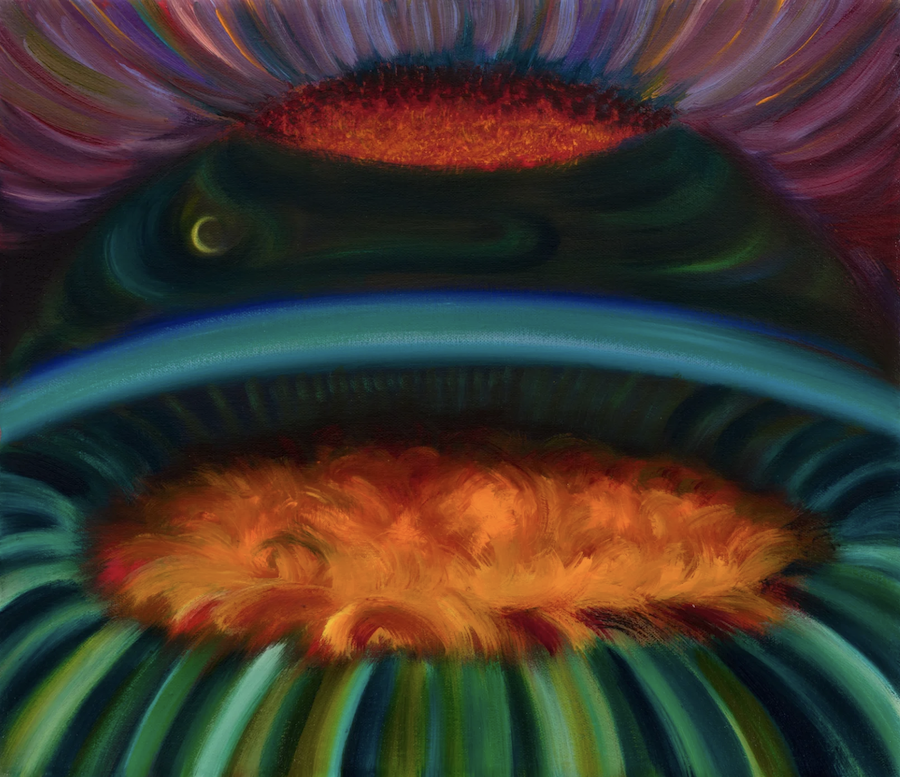Taymour Grahne Projects is pleased to present Nocturne, the first international solo show by Brooklyn-based artist Zoe McGuire. The exhibition opens at our 1 Lonsdale Road space on September 2, 2023 between 5 - 7pm.
Inspired by nature, music, and mysticism, Zoe McGuire creates surreal landscapes that hum with vibrant colors and nuanced tonal scales. In her first solo show with Taymour Grahne Projects, McGuire presents a new body of oil paintings and pastels depicting her widely recognisable night scenes. Luminous points of focus enshrouded in darkness frequently appear in these invented worlds with strange geometries, organic motifs and astral objects becoming the protagonists. McGuire is inspired by Nocturnes – musical or artistic compositions depicting night – which have been used throughout history to portray magic and mystery. She explores this historic theme to illuminate invisible forces quietly governing our sensorial and spiritual experience. Her intense contrasts and strange colour palette create a menacing and uninviting, yet hypnotic atmosphere.
Zoe McGuire is deeply interested in the physics of color and sound, and weaves in her works observations of chromesthesia. This is a sound-to-color connection where sounds create a relationship with colors and involuntarily evoke an experience of idiosyncratic, consistent color forms moving in the mind’s eye. For those with this condition, sound has highly specific chroma correlation, which neuroscience has proven physical rather than psychological. In McGuire's practice, music and color theory are one and the same. Each painting explores inherent musical qualities of movement, form, and color in the universe, without bias or conventional spatial logic, uniting natural rhythms that orchestrate physical and non-physical phenomena.
Paint becomes a medium through which the artist interrogates our relationship with the invisible. Like dye staining a cell in a petri dish, McGuire employs pigment to record approximations of life-force which our biology has impaired us to see. In “Half Light,” a small dome hovers over a landscape, suspended under a night sky. Light moves mysteriously downward, rays visibly stretching toward different valleys in a hilly scene. Above a centralized depiction of night hovers a frame, where a different expression of time – a sort of twilight – seems unbeknownst to the realm under the dome. Our vantage is both telescopic and microscopic, confusing the position of the omnipresent viewer.
Through architectural framing devices evoking the theatrical forum of the mind’s eye, McGuire’s works depict a liminal threshold where internal and external experience coalesce. Abstract forms can be read as musical notes or celestial spheres, where just enough familiarity of form allows viewers to interpret numerous external stimuli from one shape. Forms become reminiscent of objects like celestial spheres, flowers, stars, forests, waterfalls and landscapes. In “Arboreal,” for example, we see a tree dotted with electrified notes, and while feathery brushwork extends from branches connected to a central trunk, a selective blurring both unifies and evaporates individual elements, allowing the appearance of birds, stars and other forms to emerge.
McGuire utilizes light as a physical object, allowing it to connect disparate compositional elements scattered within each work. In her triptych “Aviary,” she does so literally across three canvases, where use of calligraphic line tethers scenes, and we are positioned to jump in and out of portals pulling us toward different dimensions. Framed by two large trunks, which descend toward the center of the work in chordal progression, a lower landscape grows from the roots, sitting beneath a huge fiery sun and ethereal waterfalls. Light moves seamlessly and illusionistically, through implied currents that organize the logic of her invented world.
Through her practice, Zoe McGuire reflects on the implications of landscape painting in our current moment and specifically what it means to depict our relationship to landscape in a time of climate catastrophe. In this body of work, it is unclear if we view an Arcadian or post-apocalyptic world, or a planet existing far beyond our solar system. Regardless, the work embraces the formidable power of lifeforce, its mysterious mechanics and spiritual implications.




